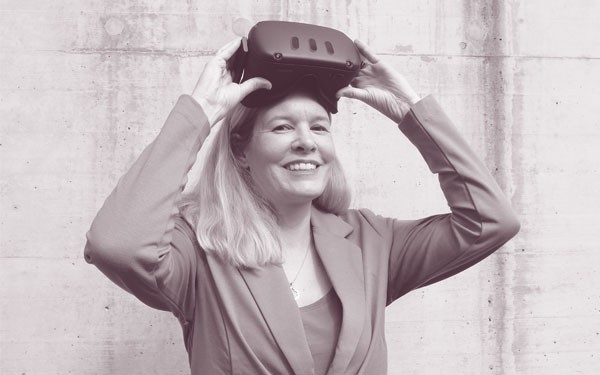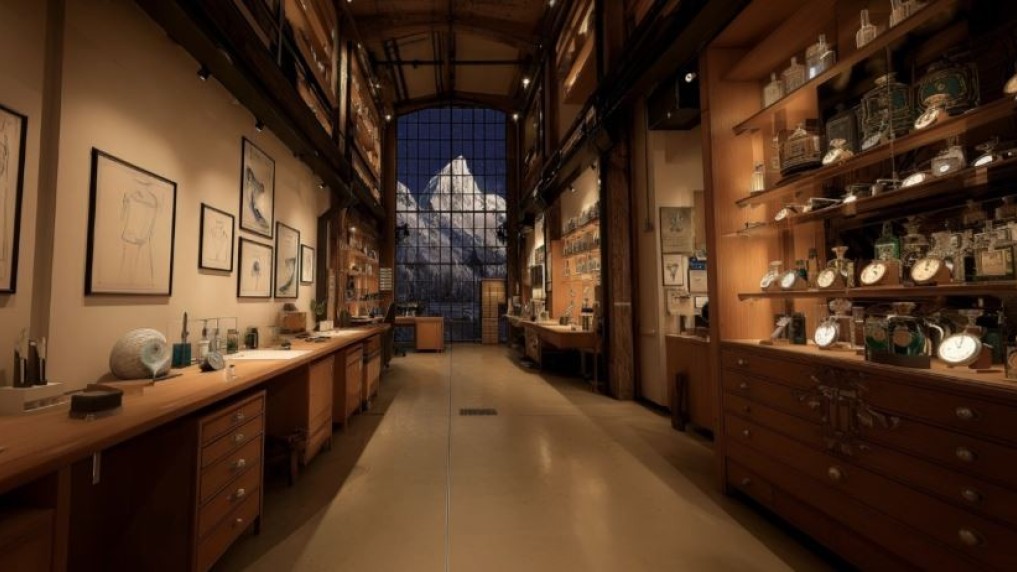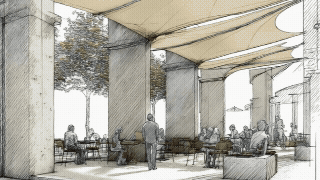Turning Ideas into Immersive Experiences with AI
Using artificial intelligence and virtual reality, Nadja Hipp is developing new forms of storytelling. In this interview, she explains how companies can benefit from her experience as an Experience Design Lead.

How has your understanding of Experience Design evolved through your experiments with artificial intelligence?
Through the CAS in Atmospheric Design, I learned how multisensory stimuli shape experiences. With tools like Leonardo and Midjourney, I translate these principles into images and videos. What used to be a static image now unfolds as an animated scene with mood, the right pacing, and ideally sound. If this creation is then staged for a VR headset, it results in an engaging immersive experience with relatively little effort.
You often talk about "atmospheric storytelling." What exactly do you mean by that?
Atmospheric storytelling, to me, means making spaces, brands, or products tangible through mood and sensory impressions. It's not about the "what" but the "how." In my AI animations, I explore exactly this question: How does a place feel when we enter it? What movement, light, or sound intensifies that feeling? Today, such scenes can be simulated and that opens new possibilities for marketing and sales teams to create powerful or even immersive experiences, for example in visitor centers, showrooms, or at trade fairs.
How can a brand be made tangible?
One of my most exciting sessions featured a futuristic villa with a waterfall and swaying palm trees. I used a specific camera movement to create a slow-motion flyover. The trick: although the video lasted only a few seconds, the movement and mood created an atmospheric moment. This insight helps me design showrooms, architectural visions, or brand spaces with emotional depth.

Do you have a use case?
Yes, one exciting project was a demo for a premium heritage brand. They wanted to present their traditional values in a modern way. Tom and I created an atmospheric demo for them, a kind of showreel of their craftsmanship. We presented the idea in virtual space to the client with just two days of effort. In such a setting, light, material, and sound can be combined with emotion in a way that aligns with brand identity. The feedback was clear: after the demo, everyone agreed, customers need to experience this in-store too! We’re excited to expand and implement the ideas with the premium brand.
What role does AI play in your work as an Experience Design Lead?
I use AI as a creative sparring partner. It helps me sketch ideas, visualize them, and quickly test different scenarios. Especially during the concept phase of a project, this brings a lot of momentum and enables early decision-making. At the same time, I rely on my intuition to recognize which elements are atmospherically important, and when it becomes too much. The storytelling must fit the brand, service, and products. This balance between technology and empathy defines my work in Experience Design.
Which industries or teams benefit most from these methods?
Wherever storytelling meets spatial impact: real estate marketing, retail, trade shows, hospitality, but also employer branding or sales enablement. Marketing and communication teams especially benefit, as they can use my methods to present ideas emotionally and visually, ideal for decision-makers, even without a big budget or long production time. The right AI tools are already here. Now it’s all about creative application.

What should companies keep in mind when using AI-based visualizations?
Companies shouldn't see AI as an end in itself. The technology is powerful, but it requires a clear briefing and a strong sense for impact, brand core, and values. I recommend starting small, for example, with an animated mood film or a social media experiment. What matters most is that the result fits the brand and only then does it generate real value.
Why isn’t it enough to just show the product?
Especially in B2B industries, I often see a misconception: the product is placed at the center, and it’s expected to have an impact. But impact doesn't come from function alone. it comes from emotion. Even buyers and engineers don't make decisions purely rationally. Emotion, trust, and values always play a central role.
When you empathetically reflect your audience’s reality and use atmospheric scenarios, the effect is lasting. The benefit follows naturally. A product that only shows what it does is interchangeable. But a product embedded in an atmospheric context resonates. I often ask provocatively: How much soul does your product have?
What personally motivates you about these new tools and methods?
I love bringing ideas to life. When spaces unfold and sketches come alive, it moves me. I dive into a creative flow that goes far beyond technology. That’s the feeling I want to share especially with clients experiencing for the first time how powerful atmosphere can be, even digitally. My motto has always been: “Learning by doing” and “Fortune favors the bold!”
This article builds on the interview Creating Holistic Experiences with Atmosphere, published as part of the CAS Atmospheric Design education.
Storytelling with KI
Strategically used camera movements like “Dolly In”, “Super Dolly Out”, or “Bullet Time” make AI-generated scenes more dynamic and emotionally engaging. They work similarly to film trailers or architectural visualizations, drawing viewers in and creating a cinematic depth.
The creative instruction given to the AI. A good prompt not only describes what should be seen, but also how it should feel. It defines the mood, the lighting, the motion, or the perspective. Successful prompting determines the quality and relevance of the result.
A short, emotionally charged scene in virtual space or video that stages brand values, spaces, services, or products through atmosphere. Compared to traditional advertising, Virtual Reality is immersive. Ideal for presenting concepts and strategic visions at events, in sales, and at trade shows—because it creates lasting impressions.
Try it yourself! Contact Nadja for a demo.